
Image of the Virgin of Guadalupe, queen and lady of Mexico
Image of the Virgin of Guadalupe
Among the numerous religious images of the Virgin Mary that we honor on the altars of South American churches, the image of the Virgin of Guadalupe from Mexico is perhaps one of the most popular. For this reason, in Religious Articles Brabander, we are going to dedicate today's entry to it.
It is estimated that more than twenty million people, including Mexicans and non-Mexicans, visit the Basilica of Santa María de Guadalupe every year, officially known as Insigne y Nacional Basilica de Santa María de Guadalupe.
Of the total number of pilgrims who travel to Mexico City to worship the image of Our Lady of Guadalupe, it is estimated that almost half of the visitors arrive on December 12, the day of the Virgin of Guadalupe. Day of great importance that we celebrate every year in the same week as the Immaculate Conception of Mary .
This impressive devotion of the Mexican people and foreign visitors has its origin more than four centuries ago. The Sacred Image of the Blessed Virgin of Guadalupe appears to the Indian Saint Juan Diego in 1531, the year in which the love story between the Mexican people and the image of the Virgin of Guadalupe begins.
Most of what we know about the apparitions of the Virgin of Guadalupe to Saint Juan Diego we owe to Don Antonio Valeriano, author of the document known as Nican Mopohua.
Nican Mopohua, account of the appearance of the image of the Virgin of Guadalupe
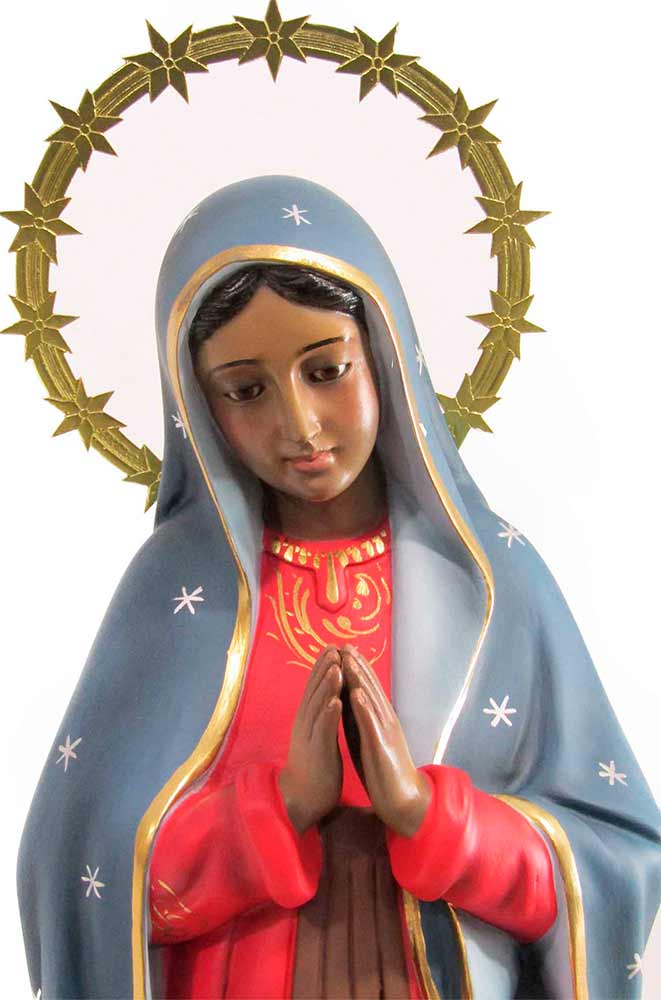 The original historical document known throughout Mexico, throughout the world, by the name of Nican Mopohua is an account of the five apparitions of the Virgin of Guadalupe to the Indian Saint Juan Diego that occurred from December 9 to 12, 1531.
The original historical document known throughout Mexico, throughout the world, by the name of Nican Mopohua is an account of the five apparitions of the Virgin of Guadalupe to the Indian Saint Juan Diego that occurred from December 9 to 12, 1531.
Nican Mopohua was written by the noble Indian D. Antonio Valeriano born in the year 1520. D. Antonio was a rich man who assimilated western letters and beliefs thanks to the teaching of friars who settled in that region of Mexico. Fray Bernardino de Sahagún, a Franciscan friar known by his contemporaries as a wise and rigorous man, had a special role in his academic training.
D. Antonio Valeriano, in addition to knowing and working in Spanish and Latin, also had a deep knowledge of Nahuatl, his mother tongue and the lingua franca of most of the inhabitants of central Mexico and the region known as Mesoamerica.
The Nican Mopohua was originally written in Nahuatl. It receives its name from the two words with which the story “Nican Mopohua” begins. This expression, in the Nahuatl language, means "Here it is narrated" or "Here it is told". This construction was widely used in numerous stories of the time.
The famous story begins as follows:
(Nahuatl): “Nikan mopoua, motekpana, in kenin yankuikan ueytlamauisoltika monexiti in senkiska ichpochtli Sankta Maria Dios Inantsin tosiuapilatokatsin, in onkan Tepeyakak, moteneua Guadalupe”.
Castilian: "Here it is narrated, it is ordered, how recently, miraculously, the perfect Virgin Mary, Mother of God, our queen, appeared there in Tepeyac, renowned Guadalupe."
It is believed that the Nican Mopohua text was written during the last years of San Juan Diego's life, since according to its author, it was the Saint himself who related the events to him.
Nican Mopohua's famous account of the apparitions of the Virgin of Guadalupe to the Indian Saint Juan Diego was first printed as part of a ledger. The book was published by Father Luis Lasso de la Vega in 1649. The book was known as Huei tlamahuiçoltica but its full name is: “Huei Tlamahuiçoltica omonexiti in ilhvicac tlatoca çihuapilli Santa María, totlaçonantzin Guadalupe in nican hvei altepenahvac Mexico itocoyocan Tepeyacac” which In Spanish it means "The Queen of Heaven, Holy Mary, our beloved Mother of Guadalupe, appeared wonderfully here near Mexico City in the place named Tepeyácac."
Huei tlamahuiçoltica's book is divided into several parts: firstly a prologue, secondly the story of Nican Mopohua (where the apparitions of the Virgin of Guadalupe are recounted), thirdly a list of the miracles that Our Lady of Guadalupe had granted her faithful, and finally a chapter dedicated to some conclusions and a prayer dedicated to the Virgin of Guadalupe.
The story of the Nican Mopohua is the main source through which we know first-hand the apparitions of Our Lady of Guadalupe to the Indian Saint Juan Diego between December 9 and 12, 1531.
Image of the Virgin of Guadalupe, Our Lady chooses the Indian San Juan Diego Cuauhtlatoatzin.
Throughout history, the Virgin Mary has chosen different seers who were able to contemplate her image. As we know, the first appearance of the Virgin Mary , known as the image of the Virgen del Pilar , had Santiago Apóstol as a witness; another apparition, such as the apparition of the Virgen del Carmen , had Saint Simón Stock as a witness; etc...
In Mexico, the Virgin Mary chose the Indian Saint Juan Diego to appear to her. He also asked for their help to build a temple in his honor in the place known as Tepeyác.
Saint Juan Diego was born in 1474 into the "calpulli" (Aztec clan) of Tlayacac in Cuauhtitlán. This region was located approximately 20 kilometers north of Tenochnitlán, Mexico. Saint Juan Diego was born into a very humble family, with hardly any resources. As we know, he was part of the macehualtin. The humblest class within the hierarchy of the Aztec Empire, only above the slaves.
When he was born, his parents gave him the name Cuauhtlatoatzin , which means "eagle that speaks" or "he who speaks like an eagle". Today we continue to know him as Juan Diego Cuauhtlatoatzin or Juan Diego de Cuauhtlatoatzin.
He dedicated his youth to working the fields and earning an honest living. According to the testimonies that came to us from his contemporaries, he was an upright and humble man. It is believed that he was raised by his uncle Juan Diego Bernardino in the town of Tulpetlac, located about 14 km from Tenochtitlán.
As his age advanced, he began to be interested in the teachings of the Franciscan friars who evangelized in those lands. A deep religious feeling began to awaken in him that would lead him to receive Holy Baptism at the age of almost 50 years. Before taking this definitive step in his union with God and with the Virgin Mary, whom he loved deeply, the Indian San Juan Diego had met another Indian of humble origin who shared his religious devotion. Both agreed to receive Baptism together and decided to name themselves Juan Diego and María Lucía.
Both were deeply religious and liked to attend mass. In one of these Eucharistic celebrations, a friar extolled the virtues of chastity, a quality that was highly valued by the Virgin Mary. The couple decided by mutual agreement decided to live the rest of their lives in chastity.
The life of Juan Diego and María Lucía continued with their humble daily chores, almost all of them linked to life in the countryside. It was a modest life but full of the joy that comes from approaching God and the Holy Virgin Mary. We have testimony of their deeply religious lives thanks to the studies that the Church carried out years later. These studies were intended to learn about their lives and the validity of their testimony about the apparitions of the Virgin Mary. The results of these studies, supported by testimonies of contemporaries (Mexican and Spanish indigenous people) from San Juan Diego, came to light in 1666 under the name of Informaciones Guadalupanas.
In 1529, María Lucía died. Mixed feelings invade Juan Diego. His partner in life was going to meet with God in the Kingdom of Heaven, that gave him great joy, but, at the same time, he felt regret at being left without his partner. 
Although at first he doubts what to do with his life, his faith helps him make a decision, he will go live again with his uncle Juan Bernardino in Tolpetlac, just 14 kilometers from the Church of Tlatilolco, Tenochtitlán. Juan Diego frequently walked from his house to the Church of Tlatilolco to hear the word of the Lord.
It was on one of these trips, in the year 1531, when the image of the Virgin of Guadalupe appeared to him for the first time on a small hill known as Tepeyac.
After the apparitions of the image of Our Lady of Guadalupe , Saint Juan Diego decided to leave everything he had and moved near the chapel that was built in honor of the Virgin of Guadalupe. Juan Diego led a life of service to Our Lady of Guadalupe in a modest building next to the chapel. His day to day was divided between the conservation work of the chapel of the Virgin of Guadalupe, helping pilgrims and the needy who came to the chapel.
Juan Diego died in the year 1548, four years after his beloved uncle. His deep love for the image of the Virgin Mary , his inexhaustible ability to help those in need and the affection he aroused among all the people he came to know caused him to die with a solid reputation for holiness.
The fame of sanctity of Juan Diego was not extinguished that the passing of the centuries, was increasing. Every year that passed more and more people asked for the rise of the humble Indian to the altars.
June 15, 1981, the Mexican Episcopal Conference, aware of the wishes of the Mexican people, formally requests the canonization of Juan Diego . The members of the Mexican Church know the length of the process, but popular fervor encourages them to take the Indian Juan Diego to his rightful place.
On April 9, 1990, the Holy Father John Paul II, through the Decree of Beatification, declared Blessed the Indian Juan Diego , the seer of the image of the Virgin of Guadalupe. The first part of the process was over. On May 6, 1991, John Paul II himself presides over the celebration in honor of Blessed Juan Diego in the Basilica of Guadalupe.
On February 26, 2002, after a long and rigorous process and the miraculous intervention of Juan Diego to save the life of a young Mexican, John Paul II proclaimed that he would canonize Blessed Juan Diego Cuauhtlatoatzin on July 31. The place chosen for the Canonization, how could it be otherwise, would be the Distinguished and National Basilica of Our Lady of Guadalupe, and it would be presided over by John Paul II himself.
The image of the Virgin of Guadalupe appears in Mexico
First appearance of the image of the Virgin of Guadalupe in Mexico.
On Saturday, December 9, 1531, Juan Diego got up early like every Saturday to walk to the Church of Tlatilolco, in Tenochtitlán (present-day Mexico City). He usually made this route to go to the Holy Mass and the catechism that the Franciscan monks taught in that city.
On his way to the city he always passed the foot of a hill, called Tepeyac . In that early morning I did not hear the usual sounds that I had heard so many other times. That day, on the peak of the hill, heavenly music was played by songbirds. The humble Indian was stunned, he could not believe that something so beautiful could exist in this world.
As Juan Diego thought about his happiness, the precious sound stopped, and was replaced by a woman's voice more beautiful than the song itself. The voice told him: "Juanito, Juan Dieguito."
Knowing that they were referring to him, Juan Diego decided to climb the hill. He walked happily, the woman's voice had filled his heart with joy. When he reached the top he found a woman of superhuman beauty, he found the image of the Virgin Mary . Juan Diego quickly knew that he was in the presence of our Holy Mother.
The Virgin Mary asked him to visit Don Fray Juan de Zumárraga, Bishop of the diocese of Mexico, when he arrived in Tenochtitlán. When he was asked, he was told that it was the wish of the Virgin Mary that they build a temple at the foot of the Tepeyac hill.
Juan Diego left for the Bishop's residence in Tenochtitlán. When he was in his presence, he told him everything he had experienced, how the image of the Virgin had appeared to him, and what he had asked of her. Don Fray Juan de Zumárraga listened to him attentively, but replied that he should meditate on his words.
Juan Diego left the Bishop's residence with very little encouragement. Inside he had the feeling that the Bishop had not believed his story and was not going to satisfy the request of the Virgin Mary.
Second appearance of the image of the Virgin of Guadalupe in Mexico.
On the afternoon of Saturday, December 9, 1531, Saint Juan Diego returned from a visit to the Bishop of Mexico at his residence in Tenochtitlán. His soul was full of sadness, he had been left with the feeling that Don Fray Juan de Zumárraga had not believed his story.
Juan Diego professed a great love for the Virgin Mary, and not being able to fulfill the mandate that he had given her saddened him deeply. He felt that he had failed, that he had not been able to satisfy the Santa Maria's request.
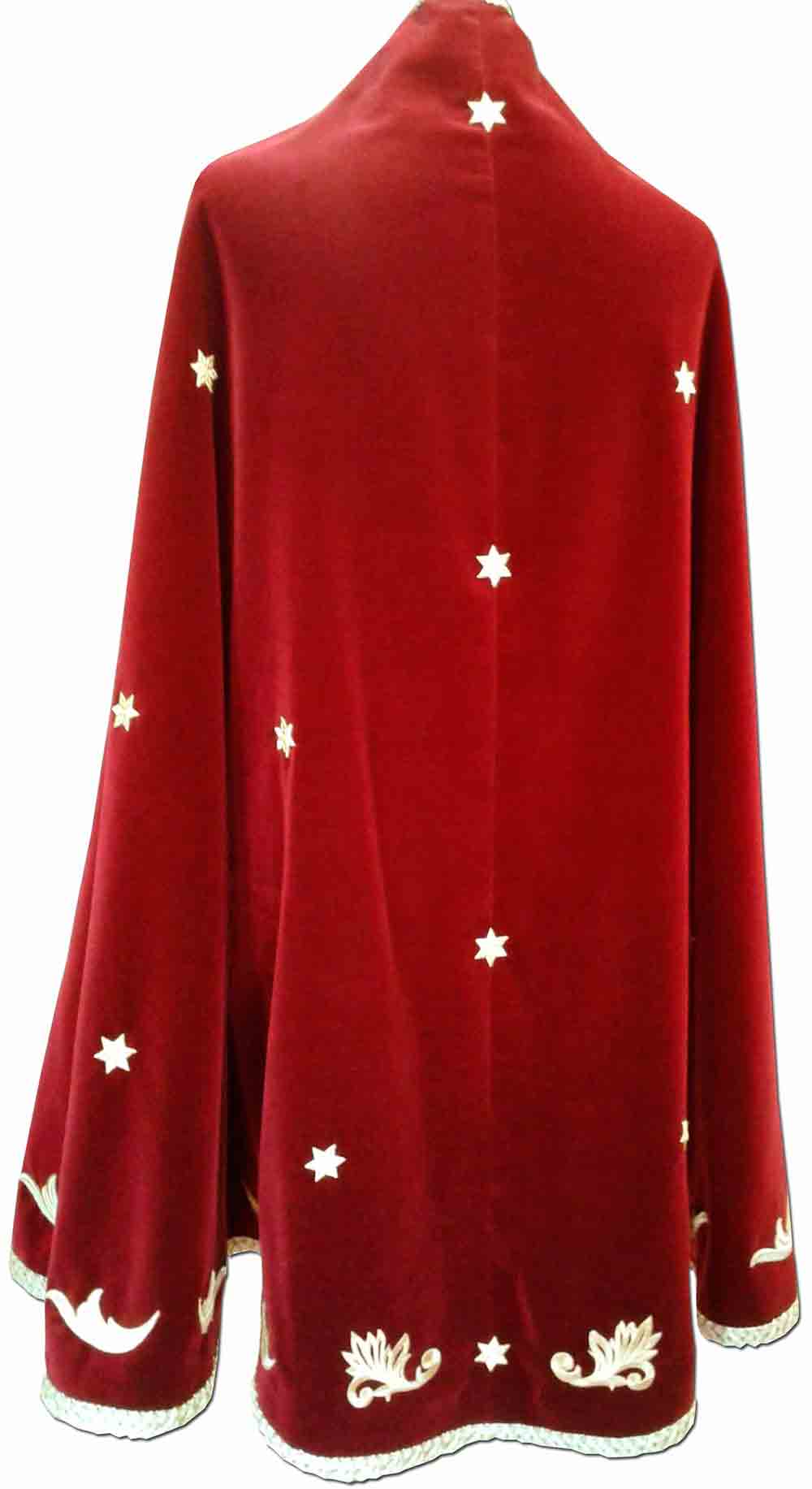 Thinking about how his interview with the Bishop had developed, his feet took him to the Tepeyac hill , right to the place where he had seen the image of the Virgin of Guadalupe for the first time. Again the Virgin of Guadalupe appeared, and again his heart was filled with joy, but to a much lesser extent than the first time. Juan Diego felt sad for having to tell the Virgin Mary that he believed that he had failed in his mission.
Thinking about how his interview with the Bishop had developed, his feet took him to the Tepeyac hill , right to the place where he had seen the image of the Virgin of Guadalupe for the first time. Again the Virgin of Guadalupe appeared, and again his heart was filled with joy, but to a much lesser extent than the first time. Juan Diego felt sad for having to tell the Virgin Mary that he believed that he had failed in his mission.
The Indian explained to the Virgin of Guadalupe what had happened. He recounted the events and the feeling he had left when he left the meeting with the Bishop of Mexico. Next, Juan Diego told the Virgin Mary that perhaps it was better that she choose someone else who was more “principal”. He had been born into the macehualtin, the humblest class, and he was not the right person to assert himself before the Bishop. He was not used to talking to such personalities, his life had always been that of a humble peasant, "a little man."
The Virgin of Guadalupe looked at him with tenderness, told him that he was not a "principal" man but that she should help him at that moment, the Virgin wanted it that way. Juan Diego filled with confidence again by the words of Santa Maria, promised him that he would go to see the Bishop of Mexico and that he would convince him.
Saint Juan Diego went home to rest. He was convinced that the next day he would carry out the commission for the Virgin of Guadalupe.
Third appearance of the image of the Virgin of Guadalupe in Mexico.
On Sunday, December 10, 1531 , Juan Diego got up early. He was anxious to reach Tlatilolco and meet again with the Bishop of Mexico. Our Lady of Guadalupe had trusted him, and the Indian, although humble, had a devoted heart.
It was still night when he left his house. He walked fast, without stopping, his mind was in Tlatilolco. He wanted to arrive with enough time to attend the Holy Mass, something that was very much to his liking.
Once the Eucharistic celebration was over, he headed for the Bishop's house. He knew exactly what he was going to say. The image of the Virgin of Guadalupe was clear in his mind.
When he was in the presence of the Bishop of Mexico , after greeting him as necessary, he began to explain to him the events that had occurred the day before. Don Fray Juan de Zumárraga still did not believe the Indian's words. And he looked for a way to find some flaw in the story that Juan Diego was telling him. The Bishop asked him about the figure of Our Lady of Guadalupe, about the time of the apparition, about the place… and about many other things. Juan Diego responded to all of this with the confidence of one who possesses the truth.
Despite everything, the Bishop of Mexico still did not believe Juan Diego. Don Fray Juan de Zumárraga asked the Indian to bring him a sign showing that the Virgin of Guadalupe appeared on the Tepeyac hill. Juan Diego responded to the Bishop of Mexico: “Lord, see what the sign you ask for must be; that later I will go to ask the Lady of Heaven who sends me here.”
Without saying anything else, Juan Diego said goodbye and left in search of the Virgin of Guadalupe. The Bishop, thinking that the story of the Indian was a product of his imagination, asked some of his trusted servants to follow him. Don Fray Juan wanted to know what the humble Indian was doing.
Juan Diego walked the road back to his house again. This route, which he had traveled so many times again, would take him through the Tepeyac hill, a place where Our Lady of Guadalupe had already appeared to him on two occasions. The servants of the Bishop of Mexico followed him prudently, they did not want the Indian to discover them and change their plans. Arriving at the Tepeyac hill, the servants lost sight of Juan Diego. They searched tirelessly but could not find it. The servants took this disappearance as an unequivocal sign that Juan Diego was a fraud. The history of the apparitions of the image of the Virgin of Guadalupe had to be an invention. Convinced of their arguments, the servants explained to the Bishop the conclusion they had reached. In addition, they recommended to Don Fray Juan that he give an exemplary punishment to Juan Diego for trying to deceive them.
As the Bishop of Mexico met with his servants, the image of Our Lady of Guadalupe appeared to Juan Diego again. The Virgin of Guadalupe asked the Indian about the Bishop's reaction. Juan Diego sadly explained to Santa María that the Bishop of Mexico had asked him for a sign that would show that what the Indian was saying was the will of Our Lady of Guadalupe.
The Virgin Mary saw Juan Diego very afflicted, and to console him told him not to worry. That the next day he went to see her again. Our Lady of Guadalupe asked Juan Diego to see her again the next day. She would give him a sign that would clear up any doubt that the Bishop of Mexico or any other person might have.
Juan Diego continued on his way home with a heart full of joy. The words of Our Lady of Guadalupe had reassured him. Walking lightly as he used to do, he soon reached his home in Tolpetlac. A small country house that he had shared with his uncle, Juan Bernardino, since the death of his wife. 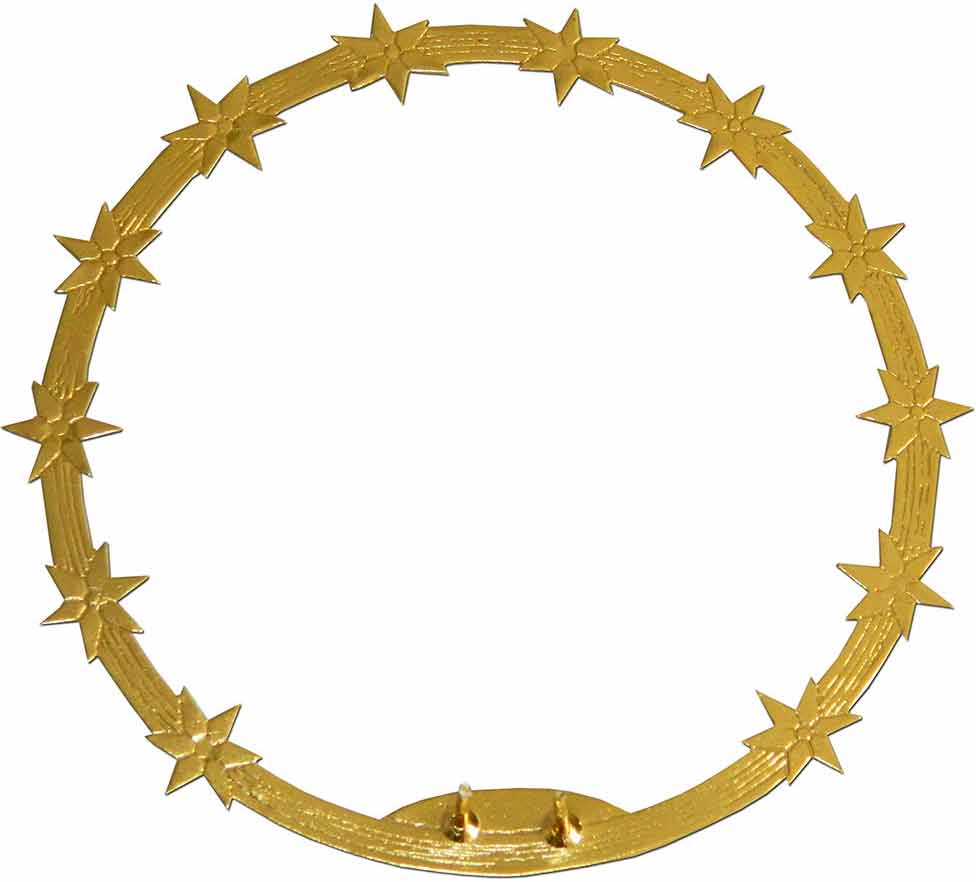
When he entered his home his joy dissipated. He saw his uncle lying seriously ill in bed. Juan Diego, deeply worried, went in search of the Tolpetlac doctor.
The doctor spent all night on Sunday and a good part of Monday trying to treat Juan Bernardino for his illness. After much effort, the doctor realized that the patient had no solution. Juan Bernardino was in critical condition. Already at dawn, Juan Bernardino called Juan Diego and asked him to go to Tlatilolco in search of a priest. It was the uncle's wish to confess one last time.
It was early morning and the darkness of the night covered the road. Juan Diego left his house desolate. His uncle was in critical condition and had not gone to see the Virgin of Guadalupe , as he had been the day before. He had been by his uncle's side all day, and had not been able to go to meet Our Lady of Guadalupe.
The Indian decided to take an alternative route to the Tepeyac hill. Despite having been by his uncle Juan Bernandino's side, knowing that it was what he had to do, the image of the Virgin of Guadalupe that formed in his head made him feel sad. He had given his word to Guadalupana and had not kept it. With the change of route, Juan Diego hoped not to come across the image of Our Lady of Guadalupe.
Fourth appearance of the image of the Virgin of Guadalupe in Mexico.
The Indian Juan Diego was walking in the dark of the night. He was walking fast. His only wish was to find a priest quickly. He knew that bringing a priest to his house was the only way to ease Juan Bernardino's heart.
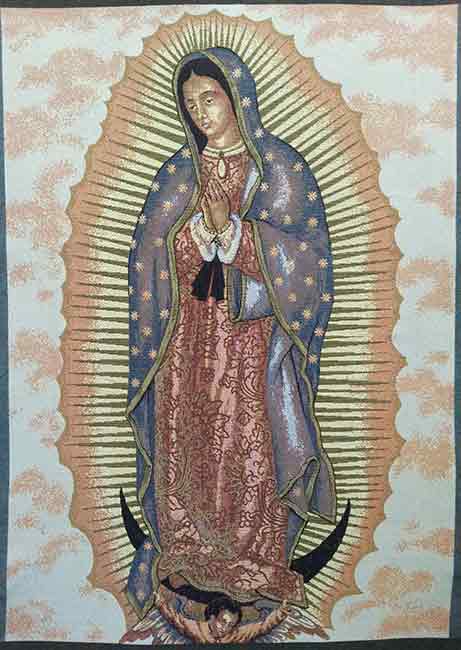 Suddenly the Indian saw the image of the Virgin of Guadalupe appear. The moment he became aware of Our Lady's presence, he knelt down, perhaps out of shame, or perhaps out of sorrow, or perhaps out of fear.
Suddenly the Indian saw the image of the Virgin of Guadalupe appear. The moment he became aware of Our Lady's presence, he knelt down, perhaps out of shame, or perhaps out of sorrow, or perhaps out of fear.
With his knees on the ground, Juan Diego began to explain to Guadalupana why he hadn't gone to see her the day before and now he was walking in such a hurry. The Indian told the Virgin Mary that his uncle was very ill and needed a priest to go to him to confess. Juan Diego also promised her that as soon as he finished fulfilling the mission, he would return without delay to be able to fulfill the will of the Virgin.
The Virgin of Guadalupe listened patiently to Juan Diego's explanations. When he had finished speaking, Our Lady told him that he did not have to worry since his uncle would not need the assistance of any priest. The Virgin of Guadalupe told him to remain calm that his uncle Juan Bernandino was cured , that the disease had already left. Santa María's words reassured Juan Diego definitively.
After telling him about his uncle's healing, Our Lady of Guadalupe told Juan Diego that he should climb to the top of the Tepeyac hill. At the top he would find the signal that was to lead to the Bishop of Mexico. With this proof Don Fray Juan de Zumárraga would not doubt the word of the Indian.
San Juan Diego quickly climbed the Tepeyac hill. At the top he found a scene that amazed him, the whole place was full of flowers, beautiful roses. In addition to the incredible beauty that surrounded him, Juan Diego knew that this was the will of Our Lady of Guadalupe, the flowers that surrounded him had never bloomed at that time of year. Juan Diego had never seen roses in December.
Following the instructions of Our Lady of Guadalupe, Juan Diego collected a large number of roses and used his cloak, which he used in winter to protect himself from the cold, to store them. The Indian knew that with his cloak full of flowers, the Bishop of Mexico would believe him without a shadow of a doubt. Once he filled his cloak with beautiful flowers, Juan Diego set out on the road to Tlatilolco. He was anxious to get to the Bishop's house and fulfill the will of the Virgin of Guadalupe.
Juan Diego arrived at the house of Don Fray Juan de Zumárraga. At the door he found some of the servants of the Bishop of Mexico. The Indian was recognized and the servants did not let him enter. Juan Diego waited patiently, he had no intention of leaving without speaking with the Bishop of Mexico. After waiting for a long time, the servants went to talk to Don Fray Juan and told him that the Indian had returned and that it seemed that he was carrying something in his cloak.
The Bishop of Mexico quickly realized that the Indian had returned to show him the sign of the Virgin of Guadalupe. Without wasting time, Don Fray Juan went out to meet Juan Diego.
When the Indian saw the Bishop, he knelt down and told him that he was bringing a sign so that he would fulfill the will of Our Lady of Guadalupe and build a temple on the Tepeyac hill. Juan Diego explained that his tilma was full of roses that could only be seen at other times of the year, never in December. The Virgin of Guadalupe had asked him to collect them and show them to the Bishop and anyone who wanted to see them. In this way everyone would know that the Indian Juan Diego was the bearer of the word of the Virgin Mary.
When the Indian unfolded his tilma, the flowers began to fall. Its extraordinary beauty amazed the Bishop of Mexico and all those present. Among the wonders that were experienced that day there was another that surpassed beauty to the flowers, all those who were there could see how an image of the Virgin of Guadalupe had been printed on the Indian's cloak.
The image of Our Lady of Guadalupe that everyone was able to admire is the same one that we can currently see in the Basilica of the Virgin Mary of Guadalupe. A figure approximately one and a half meters tall. With a beautiful dark face with a sweet look. The hands in prayer position and all surrounded by rays and flashes that form a golden aura. The feet of the figure are decorated with a cherub and a crescent.
The Bishop and his servants, knowing that they were in the presence of a miraculous event, knelt down. The flowers and the tilma with the image of Our Lady of Guadalupe were definitive proof that Juan Diego was indeed a messenger of the Virgin Mary. 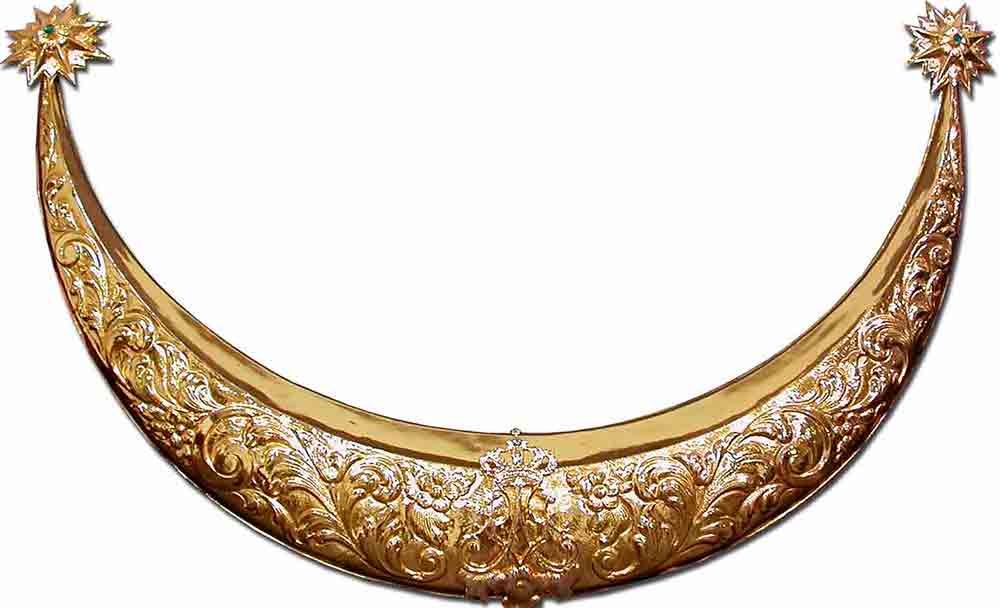
The Indian spent all day and all night in the house of the Bishop of Mexico. The next day, a small delegation headed by the Bishop accompanied Juan Diego to the Tepeyac hill to see the place where Our Lady of Guadalupe wanted her temple erected. Once this was done, the Indian asked the Bishop to allow him to go home, he wanted to know about his uncle Juan Bernardino.
Don Fray Juan gave the Indian permission to leave, but asked him to be accompanied by one of his servants to make the journey more pleasant. The Indian agreed and they both left towards Tolpetlac.
When they got home, they found Juan Bernardino full of vitality and joy. His health had recovered, all the pains that haunted him had disappeared. Juan Bernardino told them that the Virgin had been responsible for their salvation. Holy Mary had appeared to him and miraculously healed him. He had also asked that from that day on the image on the tilma be called the Virgin Saint Mary of Guadalupe.